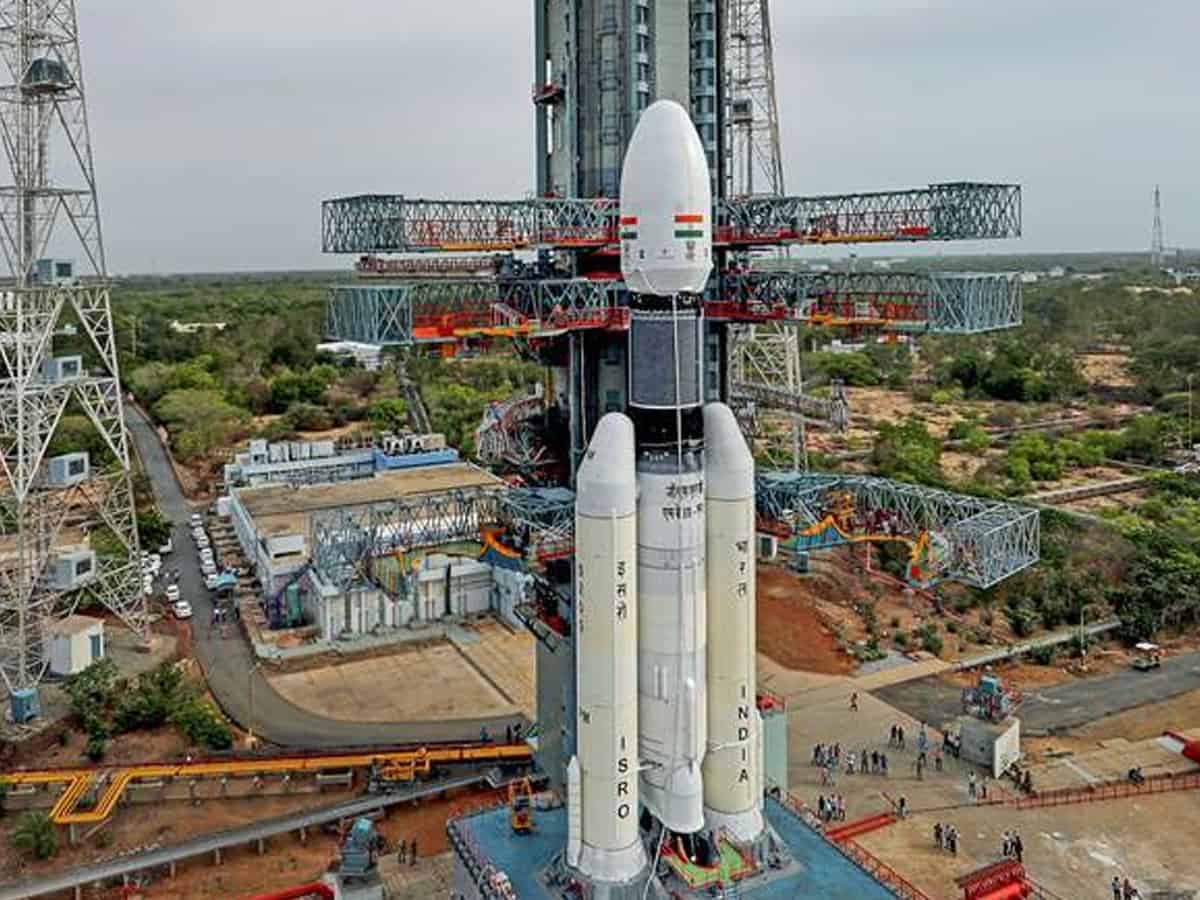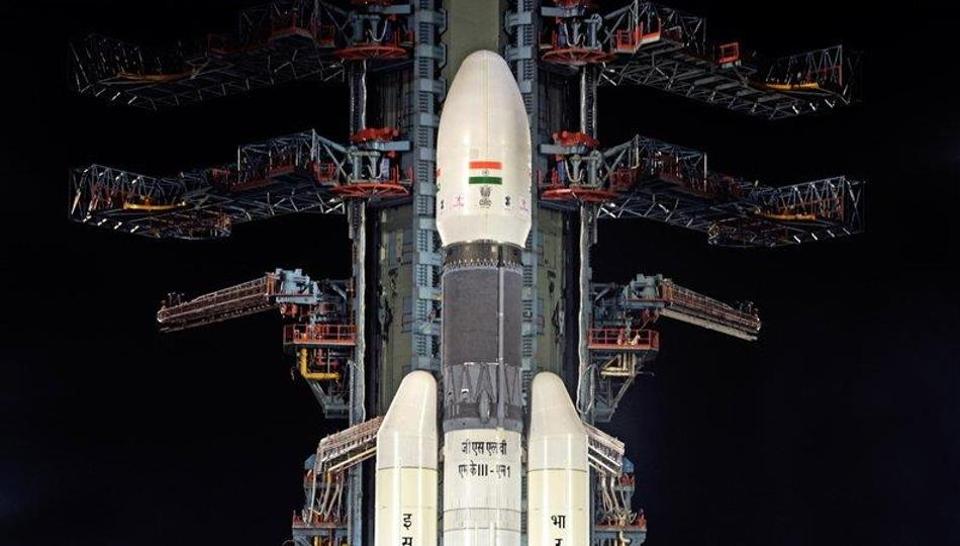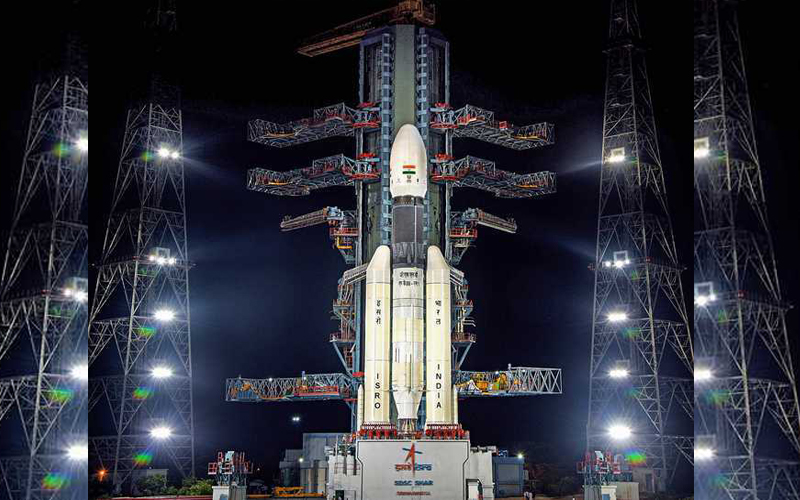
India will take another shot at landing its own Rover on the Moon this Friday, July 14. Chandrayaan-3, the Lunar mission that is designed to accomplish this feat, is all set and the countdown for the launch from the Satish Dhawan Space Port in Sriharikota, Andhra Pradesh has begun.
The Indian Space Research Organisation (ISRO) Tweeted, “Announcing the launch of Chandrayaan-3: LVM3-M4/Chandrayaan-3 Mission: The launch is now scheduled for July 14, 2023, at 2:35 pm IST from SDSC, Sriharikota.”
The ISRO’s most powerful and heaviest Launch Vehicle Mark III (LVM3) from the GSLV (Geosynchronous Satellite Launch Vehicle) stable will perform the task of placing the integrated module in an Elliptic Parking Orbit (EPO) of size ~170 x 36500 km.
The ISRO Chairman, Dr S Somnath said, “The launch will take place on July 14 and we will land on the moon successfully, that’s our hope. The rover is 26-kilogram mass rover approximately, and it will work for two weeks. It will travel for duration of 15 days depending upon various scenarios. The distance will vary. So we are hoping that if everything goes normal, our planned trajectory can be accomplished.”

The previous mission-Chandrayaan-2, launched by ISRO on July 22, 2019 failed, when Vikram the lander crashed onto the Moon’s surface during the dying seconds of the completion of the mission on September 6. However, it’s Orbitter was successfully released and is operational.
Crucial Launch for India.
It’s important for India to succeed in this attempt as the space race has intensified with US, China, Japan among nations and Private players like Space X, Blue Origin, Virgin Galactic making big strides in the last few years. The Chinese have successfully landed their Rover on the Moon. The National Aeronautical and Space Agency (NASA) has through its ambitious Artemis Programme plans to land humans again in 2024. It has recently sent the lunar probe successfully.
The ISRO, which was ahead of China with the Chandrayaan-1 in 2008, has a lot of catching up to do. To its credit, traces of water were reported in that maiden mission, which have been since confirmed. The Chandrayaan-3 landing is also in an area of high probability of water on the moon.
The Indian space agency got a push recently with the increasing collaborations with the NASA formalised during the visit of Prime Minister, Narendra Modi to the US in June. Accordingly, India is joining the Artemis Mission and will also participate in the manned programmes to the International Space Station (ISS).
The Chandrayaan-3 Mission
According to the ISRO, the main objectives of the Chandrayaan-3 Mission are threefold: to demonstrate safe and soft landing on lunar surface; to demonstrate Rover roving in the moon and to conduct scientific experiments.
Chandrayaan-3 consists of a Lander and Rover configuration. It does not have an Orbitter. The Lander will have the capability to soft land at a specified lunar site and deploy the Rover which will carry out in-situ chemical analysis of the lunar surface during the course of its mobility. The Lander and the Rover have scientific payloads to carry out experiments on the lunar surface. The main function of PM is to carry the LM from launch vehicle injection till final lunar 100 km circular polar orbit and separate the LM from PM.
The rover has a life of 14 days when there is sunlight on the Moon. There will be temperatures below 150 degrees when the sun is absent for 14 days and we are hoping the rover can survive the period when the battery has no means of recharging. One day the battery will die and that day we will have to say bye to the rover. The life for the lander and rover is estimated to be 15 days,” the ISRO chairman said.
Lander payloads
Chandra’s Surface Thermophysical Experiment (ChaSTE) to measure the thermal conductivity and temperature; Instrument for Lunar Seismic Activity (ILSA) for measuring the seismicity around the landing site; Langmuir Probe (LP) to estimate the plasma density and its variations. A passive Laser Retroreflector Array from NASA is accommodated for lunar laser ranging studies.
Rover payloads
Consist of the Alpha Particle X-ray Spectrometer (APXS) and Laser Induced Breakdown Spectroscope (LIBS) for deriving the elemental composition in the vicinity of landing site. It also consists of an indigenous Lander module (LM), Propulsion module (PM) and a Rover with an objective of developing and demonstrating new technologies required for Inter planetary missions, according to the ISRO.
The Significance of the Mission
The Chandrayaan-3 is attempting to land on the South Pole side of the Moon. It is a tough terrain where no spacecraft has landed so far. Also, it’s a very different place than where the US Moon missions took place in the late 1960s.
According to the ISRO, Chandrayaan-3 is a step towards developing and demonstrating technology that would in future be used for interplanetary missions. Chandrayaan-3 is primarily a landing and roving mission. Unlike the partially successful Chandrayaan-2 (2019), there is no orbiter element this time.
The excitement over the Indian venture to land on the South side also entails prospects of studying the Moon ice and also the large craters there. But, the challenge is the difficulty in pinpointing the area to land as most of the area remains in the shadow region of the Moon. The success of the ISRO would bolster the efforts of the NASA, which is aiming to land the Artemis-3 mission.
But, India can draw confidence from its experiences of the first two Chandrayaan missions and specially the first (2008), when the Impactor probe with experimental equipment was crashed into the South Pole region. The Moon Orbitter, carrying a NASA Instrument also confirmed the groundbreaking detection of water molecules on the lunar surface by Indian space scientists.

About the Chandrayaan-2, the ISRO chairman said that multiple learnings from the failure of the lander have been incorporated in the Chandrayaan-3 mission, including a provision for landing at higher speeds and new technology for assessing the speed levels as the lander approaches the landing site on the moon.
Will India be third time lucky to successfully land on a hitherto uncharted territory of the Moon? The countdown has begun.
